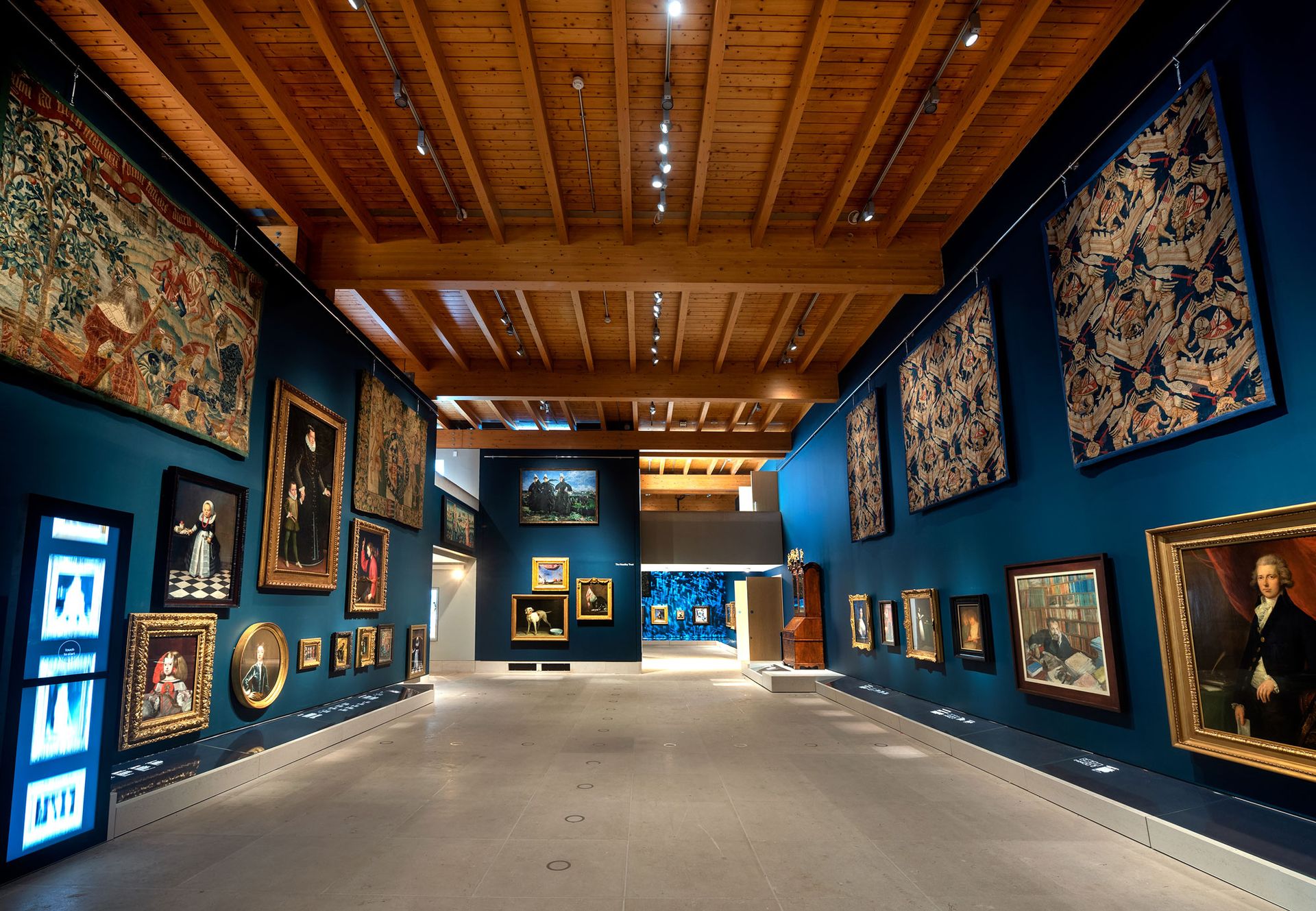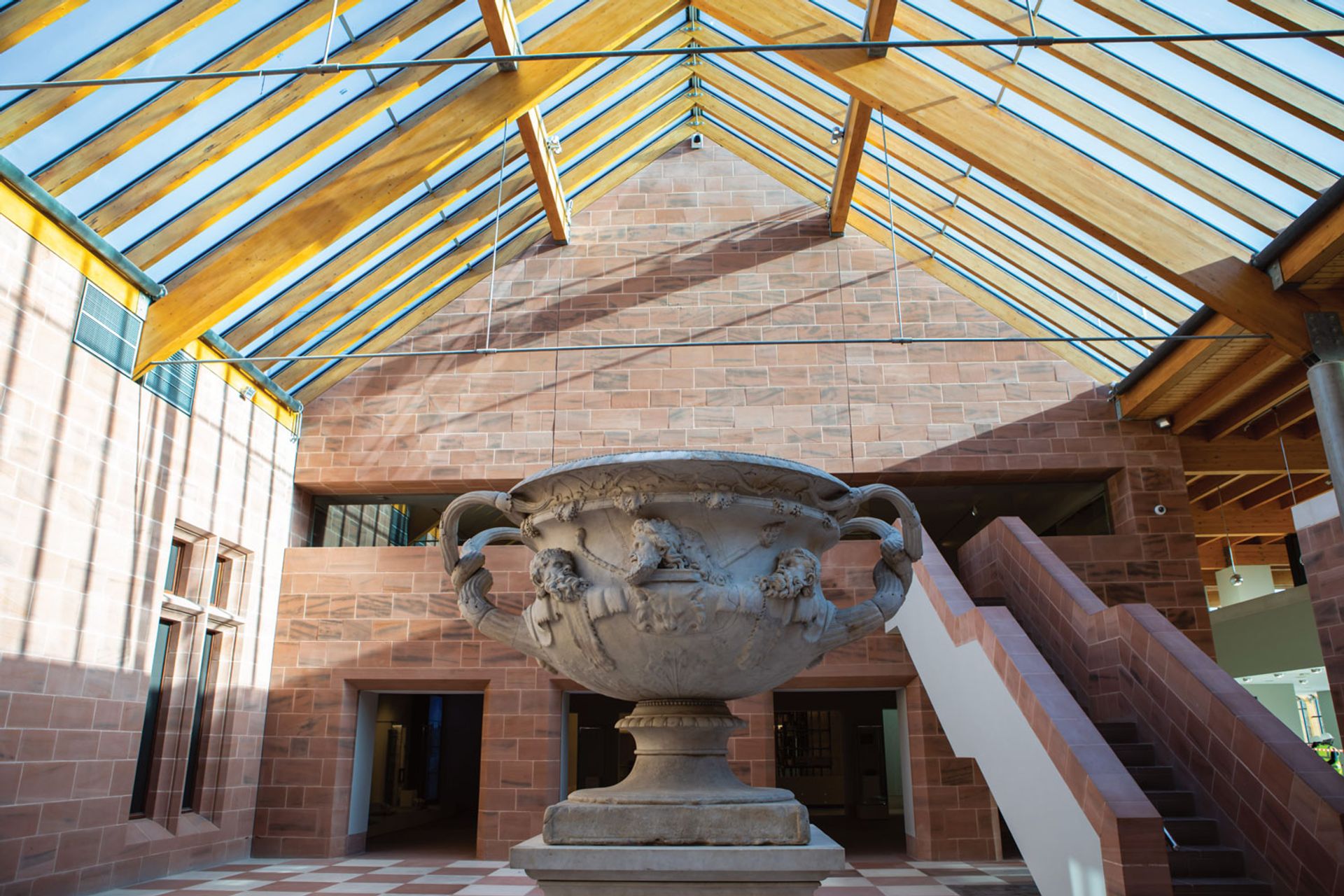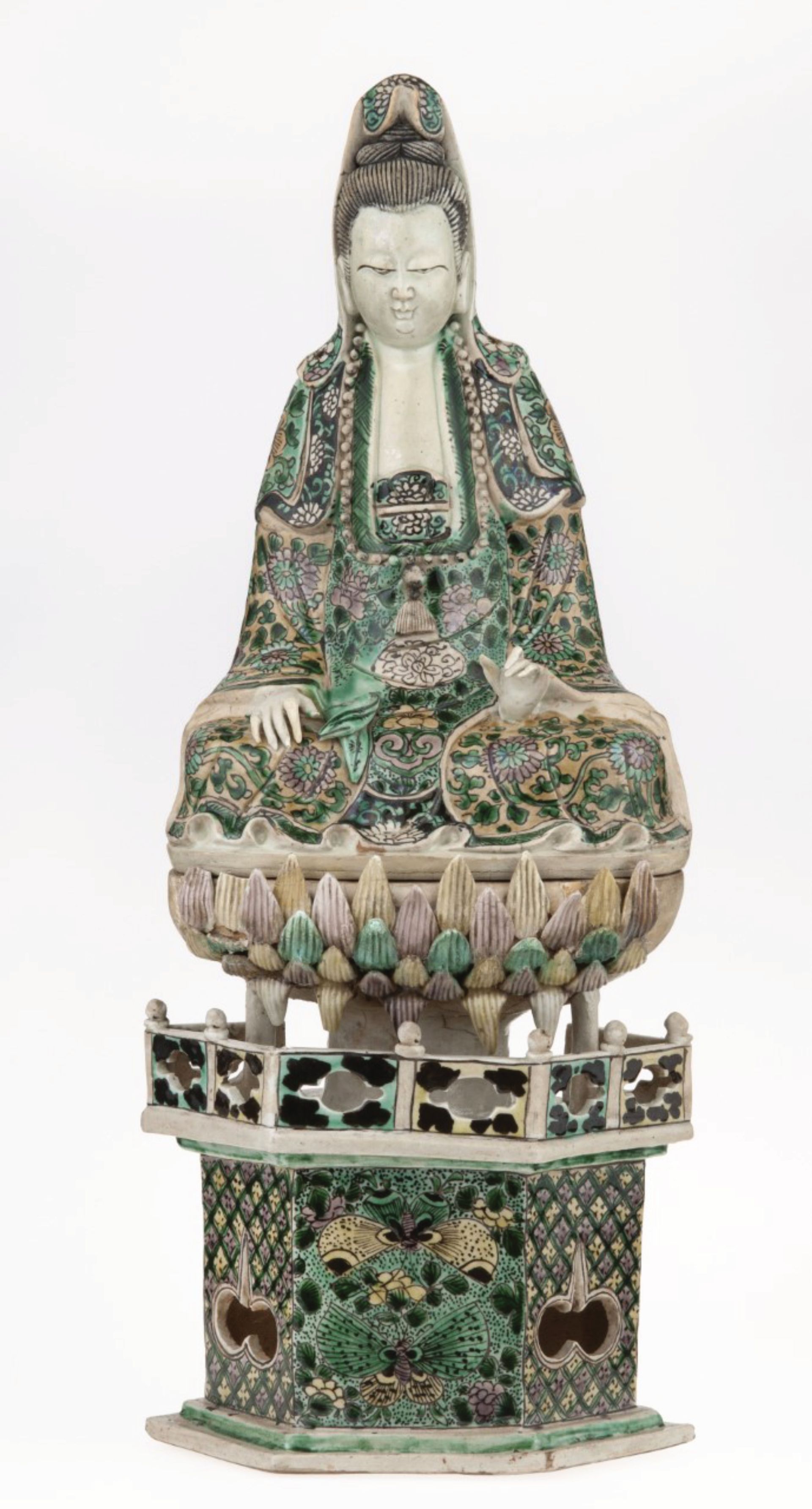Surrounded by green fields, woodland and a fold of Highland cattle stands one of Scotland’s finest art collections, opening to the public again on 29 March after a six-year, £68m refurbishment.
The Burrell Collection has been housed in Pollok Country Park on the south side of Glasgow since 1983, but harks back to the tastes of a century before. Amassed in the late 19th and early 20th century, art collections do not come much more steeped in white, male, wealth-driven narrative than this one. Today, museum staff have been tasked with reshaping the Burrell for the 21st century with the aid of immersive displays and digital technology, while paying tribute to its namesake’s original vision.

The 1970s building designed by Barry Gasson, John Meunier and Brit Andresen has undergone a six-year modernisation by John McAslan + Partners Photo: © CSG CIC Glasgow Museums and Libraries Collections
There is plenty of Scottish reverence towards the collectors “Sir William” and “Lady Constance”, as the curators refer to the Burrells. However, this was less a “his and hers” collection than a one-man passion project. Constance dabbled in buying lace and ceramics, but William had the wherewithal: he inherited a shipbuilding business and turned to collecting art in the way of fabulously rich industrialists. “It’s unclear exactly why,” says the curator Laura Bauld. “But his mother was a collector, and he was much influenced by others like him. It was what they did.”
Burrell was initially drawn to 19th-century French art, but later switched his focus to antiquities and a host of other pursuits, including Chinese porcelain, armour and Medieval stained glass. His approach was defined by quantity as much as quality: by the time he gave the collection to the city of Glasgow in 1944 it numbered more than 6,000 objects, and he continued to add to it (there are around 9,000 pieces today). Burrell tended to purchase items unseen and in some cases he never saw them at all. One of the treasures of the redisplayed collection is the 15th-century Bridgwater Ceiling, elaborately carved in oak, which remained in storage throughout Burrell’s long life (he died in 1958, aged 96).

Burrell's eclectic collecting interests included Medieval stained glass, tapestries and armour Photo: © CSG CIC Glasgow Museums and Libraries Collections
The Burrells lived in the west end of Glasgow but had designs on moving to a castle, and in the 1920s they did, relocating to Hutton Castle near Berwick-on-Tweed. “He always wanted his collection to be admired in a domestic setting,” Bauld says. The old museum had three rooms recreating the couple’s stately home; the refurbishment has whittled it down to one, a grand banqueting hall where visitors can peep through the windows. “We’re still trying to incorporate Burrell’s wishes,” Bauld says.
Some of these turned out to be prescient. Fearful of the effect of air pollution on the collection, his gift stipulated that it had to be housed in a rural setting within a 16-mile radius of the city centre. The 1967 bequest of Pollok Country Park finally fit the bill, although it took a further 16 years to open the building, a 1970s architectural beacon designed by Barry Gasson, John Meunier and Brit Andresen. The gallery closed in 2016 for a John McAslan + Partners modernisation that retains the original building and its footprint, though some changes have attracted controversy. Meunier has criticised the relocation of the main entrance and the loss of two Hutton Rooms.

The Central Gallery at the refurbished Burrell Collection Photo: © CSG CIC Glasgow Museums Collections
The design agency Event has led a redesign that carves out around a third more gallery space for the collection. “There’s 15% more art on display now,” says Esther Dugdale, a creative director at the firm, and visitors can now access the storerooms on the lower ground floor.
For Bridget McConnell, the outgoing chief executive of Glasgow Life, the charity that runs the city’s cultural and sports facilities, the reimagined Burrell Collection is precisely what post-pandemic Scotland needs. “I know some people will find that hard to hear, when we need more money for social care and health—but we need art as well. That’s what the last two years have taught us,” she says. “As the suffragettes said, we don’t just need bread—we need roses.”
Three highlights of the collection

Photo: © CSG CIC Glasgow Museums and Libraries Collections
Wagner Garden Carpet (early 17th century)
Named after a previous owner, this 5m-by-4m Persian garden carpet is one of the oldest known examples of its kind. Festooned with birds, animals, insects and fish, the design is intersected with water channels, evoking the gardens of heaven. Only now with the refurbishment is there space for its permanent display.

Photo: courtesy of Glasgow Life
Warwick Vase (second century)
The first item purchased after the collection was opened to the public in the 1980s, this mammoth sculpture was assembled from Roman fragments excavated from the site of Hadrian’s Villa at Tivoli, with the addition of extra marble. Napoleon said that if he conquered Britain, the Warwick Vase would be the first thing he would take, and the trophy given to the male singles winner of the Australian Open tennis championship is modelled on it.

Photo: © CSG CIC Glasgow Museums and Libraries Collections
Figure of Guanyin
(Kangxi period, 1662-1722)
The Burrell curators have worked with groups that may have felt under-served by the collection in the past, including transgender people, for whom Guanyin has become an icon of non-binary identity. Guanyin’s origins are in 900s Chinese Buddhism, when the Indian male deity Bodhisattva Avalokiteshvara was transformed into a female deity of compassion.


